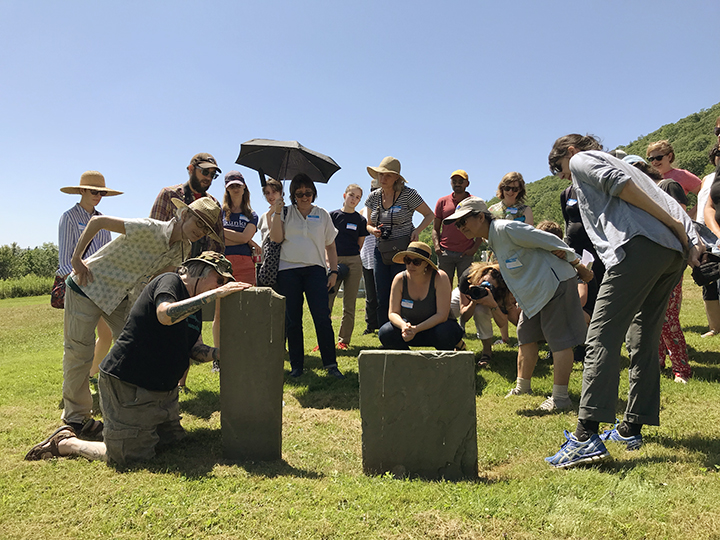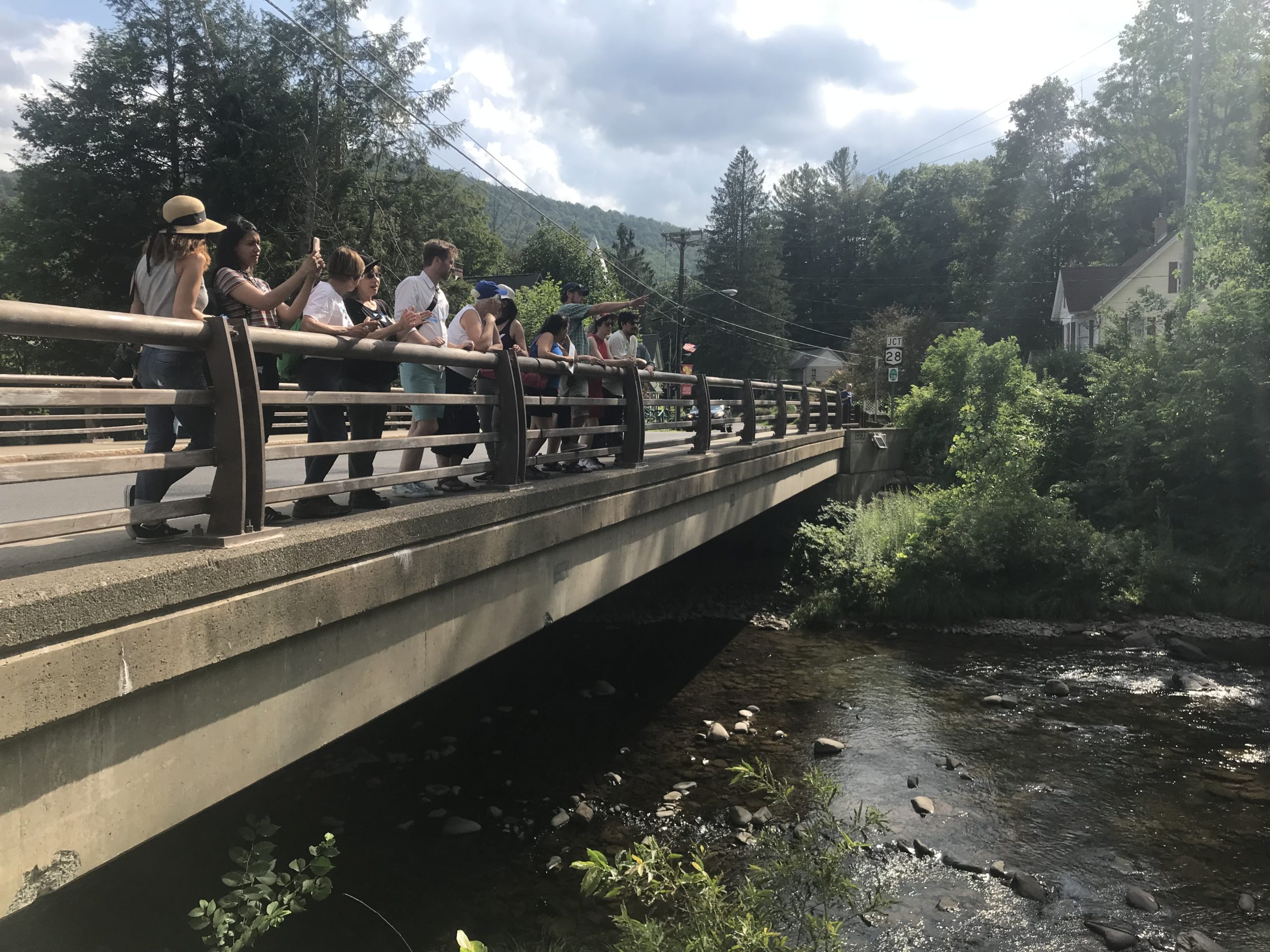2019 Bus Tours
2019 was the pilot year for the Views from the Watershed bus tour program. More than 60 people on two all-day tours explored the watershed landscape and history. We visited the two main watersheds in the NYC system (Catskills and Delaware), the two largest reservoirs (Ashokan and Pepacton), a tributary stream, a cemetery , and other resonant places in between. Lize Mogel led the tours, and local interpreters met us at each stop to give us their perspectives on what it means to be part of the watershed. These included:
Diane Galusha, author of Liquid Assets: A History of New York City’s Water System. She is president of the Historical Society of the Town of Middletown, and recently retired after 21 years as communications director and education coordinator at the Catskill Watershed Corporation.
Adam Bosch, Director of Public Affairs for the New York City Department of Environmental Protection (DEP). In this role, Adam is charged with broadly sharing information about the City’s water supply with members of the public, local journalists, elected officials, and through education programs. Before joining DEP in 2012, Adam was a journalist in New York for more than a decade.
Marianne Greenfield, Historian for the town of Delhi, is a specialist in gravestone and monument restoration. She recently worked with the DEP to restore gravestones at the Pepacton Cemetery in Andes, NY, and restored the Barnum Family Cemetery in Brewster, NY. She is the owner of Gravestone Cleaning Services.
Wendell George, Executive Director of the Catskill Mountain Club, is a long time advocate for conservation and environmental protection. A life-long hiker, he is paying it forward by helping to build new trails in the Catskills. He has completed the Catskills All Trails Challenge and is a regular and winter member of theCatskill 3500 Club.
Tim Koch, Stream Educator and Aaron Bennett, Environmental Planner, Ashokan Watershed Stream Management Program. AWSMP works to maintain the health of streams in the Ashokan Reservoir Watershed. The AWSMP aims to improve stream stability and reduce erosion threats to water quality and infrastructure, mitigate potential damage from flooding, and enhance aquatic and riparian habitat.







 Instagram
Instagram